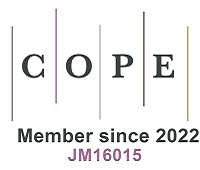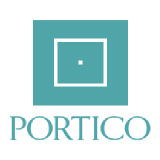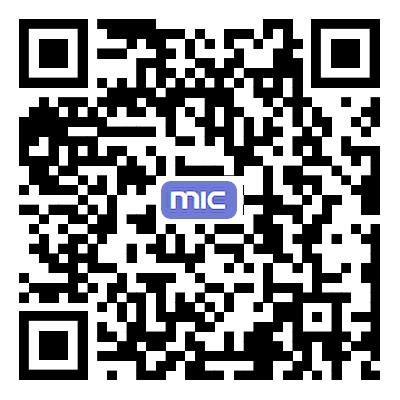REFERENCES
1. Tong S, Quinto CA, Zhang L, Mohindra P, Bao G. Size-dependent heating of magnetic iron oxide nanoparticles. ACS Nano 2017;11:6808-16.
2. Hervault A, Thanh NT. Magnetic nanoparticle-based therapeutic agents for thermo-chemotherapy treatment of cancer. Nanoscale 2014;6:11553-73.
3. Cao Z, Wang D, Li Y, et al. Effect of nanoheat stimulation mediated by magnetic nanocomposite hydrogel on the osteogenic differentiation of mesenchymal stem cells. Sci China Life Sci 2018;61:448-56.
4. Liu X, Zheng J, Sun W, et al. Ferrimagnetic vortex nanoring-mediated mild magnetic hyperthermia imparts potent immunological effect for treating cancer metastasis. ACS Nano 2019;13:8811-25.
5. Liu X, Zhang Y, Wang Y, et al. Comprehensive understanding of magnetic hyperthermia for improving antitumor therapeutic efficacy. Theranostics 2020;10:3793-815.
6. Maier-Hauff K, Ulrich F, Nestler D, et al. Efficacy and safety of intratumoral thermotherapy using magnetic iron-oxide nanoparticles combined with external beam radiotherapy on patients with recurrent glioblastoma multiforme. J Neurooncol 2011;103:317-24.
7. Johannsen M, Gneveckow U, Thiesen B, et al. Thermotherapy of prostate cancer using magnetic nanoparticles: feasibility, imaging, and three-dimensional temperature distribution. Eur Urol 2007;52:1653-61.
8. Suriyanto, Ng EY, Kumar SD. Physical mechanism and modeling of heat generation and transfer in magnetic fluid hyperthermia through Néelian and Brownian relaxation: a review. Biomed Eng Online 2017;16:36.
9. Di Corato R, Espinosa A, Lartigue L, et al. Magnetic hyperthermia efficiency in the cellular environment for different nanoparticle designs. Biomaterials 2014;35:6400-11.
10. Balakrishnan PB, Silvestri N, Fernandez-Cabada T, et al. Exploiting unique alignment of cobalt ferrite nanoparticles, mild hyperthermia, and controlled intrinsic cobalt toxicity for cancer therapy. Adv Mater 2020;32:e2003712.
11. Lu N, Huang P, Fan W, et al. Tri-stimuli-responsive biodegradable theranostics for mild hyperthermia enhanced chemotherapy. Biomaterials 2017;126:39-48.
12. Zhang J, Zhao B, Chen S, et al. Near-infrared light irradiation induced mild hyperthermia enhances glutathione depletion and DNA interstrand cross-link formation for efficient chemotherapy. ACS Nano 2020;14:14831-45.
13. Chen S, Zhang Q, Nakamoto T, Kawazoe N, Chen G. Gelatin Scaffolds with controlled pore structure and mechanical property for cartilage tissue engineering. Tissue Eng Part C Methods 2016;22:189-98.
14. Conde-leboran I, Baldomir D, Martinez-boubeta C, et al. A single picture explains diversity of hyperthermia response of magnetic nanoparticles. J Phys Chem C 2015;119:15698-706.
15. de Sousa ME, Carrea A, Mendoza Zélis P, et al. Stress-induced gene expression sensing intracellular heating triggered by magnetic hyperthermia. J Phys Chem C 2016;120:7339-48.
16. Munoz-Menendez C, Conde-Leboran I, Serantes D, Chantrell R, Chubykalo-Fesenko O, Baldomir D. Distinguishing between heating power and hyperthermic cell-treatment efficacy in magnetic fluid hyperthermia. Soft Matter 2016;12:8815-8.
17. Domenech M, Marrero-Berrios I, Torres-Lugo M, Rinaldi C. Lysosomal membrane permeabilization by targeted magnetic nanoparticles in alternating magnetic fields. ACS Nano 2013;7:5091-101.
18. Villanueva A, de la Presa P, Alonso JM, et al. Hyperthermia hela cell treatment with silica-coated manganese oxide nanoparticles. J Phys Chem C 2010;114:1976-81.
19. Baki A, Remmo A, Löwa N, Wiekhorst F, Bleul R. Albumin-coated single-core iron oxide nanoparticles for enhanced molecular magnetic imaging (MRI/MPI). Int J Mol Sci 2021;22:6235.
20. Obaidat IM, Issa B, Haik Y. Magnetic properties of magnetic nanoparticles for efficient hyperthermia. Nanomaterials 2015;5:63-89.
21. Bauer LM, Situ SF, Griswold MA, Samia AC. High-performance iron oxide nanoparticles for magnetic particle imaging - guided hyperthermia (hMPI). Nanoscale 2016;8:12162-9.
22. Coral DF, Zélis PM, Marciello M, et al. Effect of nanoclustering and dipolar interactions in heat generation for magnetic hyperthermia. Langmuir 2016;32:1201-13.
23. Gavilán H, Simeonidis K, Myrovali E, et al. How size, shape and assembly of magnetic nanoparticles give rise to different hyperthermia scenarios. Nanoscale 2021;13:15631-46.
24. Darwish MSA. Effect of carriers on heating efficiency of oleic acid-stabilized magnetite nanoparticles. J Mol Liq 2017;231:80-5.
25. Bordet A, Landis RF, Lee Y, et al. Water-dispersible and biocompatible iron carbide nanoparticles with high specific absorption rate. ACS Nano 2019;13:2870-8.
26. Gonçalves J, Nunes C, Ferreira L, et al. Coating of magnetite nanoparticles with fucoidan to enhance magnetic hyperthermia efficiency. Nanomaterials 2021;11:2939.
27. Cabrera D, Lak A, Yoshida T, et al. Unraveling viscosity effects on the hysteresis losses of magnetic nanocubes. Nanoscale 2017;9:5094-101.
28. Engelmann UM, Seifert J, Mues B, et al. Heating efficiency of magnetic nanoparticles decreases with gradual immobilization in hydrogels. J Magn Magn Mater 2019;471:486-94.
29. Kaczmarek K, Mrówczyński R, Hornowski T, Bielas R, Józefczak A. The effect of tissue-mimicking phantom compressibility on magnetic hyperthermia. Nanomaterials 2019;9:803.
30. Cabrera D, Coene A, Leliaert J, et al. Dynamical magnetic response of iron oxide nanoparticles inside live cells. ACS Nano 2018;12:2741-52.
31. Suto M, Hirota Y, Mamiya H, et al. Heat dissipation mechanism of magnetite nanoparticles in magnetic fluid hyperthermia. J Magn Magn Mater 2009;321:1493-6.
32. Dong S, Chen Y, Yu L, Lin K, Wang X. Magnetic Hyperthermia-synergistic H2O2 self-sufficient catalytic suppression of osteosarcoma with enhanced bone-regeneration bioactivity by 3D-printing composite scaffolds. Adv Funct Mater 2020;30:1907071.
33. Bigham A, Aghajanian AH, Saudi A, Rafienia M. Hierarchical porous Mg2SiO4-CoFe2O4 nanomagnetic scaffold for bone cancer therapy and regeneration: surface modification and in vitro studies. Mater Sci Eng C Mater Biol Appl 2020;109:110579.
34. Farzin A, Fathi M, Emadi R. Multifunctional magnetic nanostructured hardystonite scaffold for hyperthermia, drug delivery and tissue engineering applications. Mater Sci Eng C Mater Biol Appl 2017;70:21-31.
35. Serio F, Silvestri N, Kumar Avugadda S, et al. Co-loading of doxorubicin and iron oxide nanocubes in polycaprolactone fibers for combining magneto-thermal and chemotherapeutic effects on cancer cells. J Colloid Interface Sci 2022;607:34-44.
36. Eivazzadeh-Keihan R, Pajoum Z, Aghamirza Moghim Aliabadi H, et al. Magnetic chitosan-silk fibroin hydrogel/graphene oxide nanobiocomposite for biological and hyperthermia applications. Carbohydr Polym 2023;300:120246.
37. Sun R, Chen H, Zheng J, et al. Composite scaffolds of gelatin and Fe3O4 nanoparticles for magnetic hyperthermia-based breast cancer treatment and adipose tissue regeneration. Adv Healthc Mater 2023;12:e2202604.
38. Lu C, Zheng J, Yoshitomi T, Kawazoe N, Yang Y, Chen G. How hydrogel stiffness affects adipogenic differentiation of mesenchymal stem cells under controlled morphology. ACS Appl Bio Mater 2023;6:3441-50.
39. Wu H, Liu L, Song L, Ma M, Gu N, Zhang Y. Enhanced tumor synergistic therapy by injectable magnetic hydrogel mediated generation of hyperthermia and highly toxic reactive oxygen species. ACS Nano 2019;13:14013-23.
40. Gao F, Xie W, Miao Y, et al. Magnetic hydrogel with optimally adaptive functions for breast cancer recurrence prevention. Adv Healthc Mater 2019;8:e1900203.
41. Stocke NA, Sethi P, Jyoti A, et al. Toxicity evaluation of magnetic hyperthermia induced by remote actuation of magnetic nanoparticles in 3D micrometastasic tumor tissue analogs for triple negative breast cancer. Biomaterials 2017;120:115-25.
42. Zhang X, Wei P, Wang Z, et al. Herceptin-conjugated DOX-Fe3O4/P(NIPAM-AA-MAPEG) nanogel system for HER2-targeted breast cancer treatment and magnetic resonance imaging. ACS Appl Mater Interfaces 2022;14:15956-69.
43. Lu J, Guo Z, Xie W, et al. Hypoxia-overcoming breast-conserving treatment by magnetothermodynamic implant for a localized free-radical burst combined with hyperthermia. ACS Appl Mater Interfaces 2021;13:35484-93.
44. Jalili NA, Jaiswal MK, Peak CW, Cross LM, Gaharwar AK. Injectable nanoengineered stimuli-responsive hydrogels for on-demand and localized therapeutic delivery. Nanoscale 2017;9:15379-89.
45. Zheng J, Xie Y, Yoshitomi T, Kawazoe N, Yang Y, Chen G. Stepwise proliferation and chondrogenic differentiation of mesenchymal stem cells in collagen sponges under different microenvironments. Int J Mol Sci 2022;23:6406.
46. Sun R, Chen H, Sutrisno L, Kawazoe N, Chen G. Nanomaterials and their composite scaffolds for photothermal therapy and tissue engineering applications. Sci Technol Adv Mater 2021;22:404-28.
47. Zhang W, Chen Y, Li M, et al. A PDA-functionalized 3D lung scaffold bioplatform to construct complicated breast tumor microenvironment for anticancer drug screening and immunotherapy. Adv Sci 2023;10:e2302855.
48. Chen H, Sun R, Zeng T, et al. Stepwise photothermal therapy and chemotherapy by composite scaffolds of gold nanoparticles, BP nanosheets and gelatin immobilized with doxorubicin-loaded thermosensitive liposomes. Biomater Sci 2022;10:7042-54.
49. Lartigue L, Hugounenq P, Alloyeau D, et al. Cooperative organization in iron oxide multi-core nanoparticles potentiates their efficiency as heating mediators and MRI contrast agents. ACS Nano 2012;6:10935-49.
50. Hemery G, Keyes AC Jr, Garaio E, et al. Tuning sizes, morphologies, and magnetic properties of monocore versus multicore iron oxide nanoparticles through the controlled addition of water in the polyol synthesis. Inorg Chem 2017;56:8232-43.
51. Sutrisno L, Chen H, Chen Y, et al. Composite scaffolds of black phosphorus nanosheets and gelatin with controlled pore structures for photothermal cancer therapy and adipose tissue engineering. Biomaterials 2021;275:120923.
52. Li J, Zhang J, Chen Y, Kawazoe N, Chen G. TEMPO-conjugated gold nanoparticles for reactive oxygen species scavenging and regulation of stem cell differentiation. ACS Appl Mater Interfaces 2017;9:35683-92.
53. Zheng J, Sun R, Chen H, et al. Morphological dependence of breast cancer cell responses to doxorubicin on micropatterned surfaces. Polymers 2022;14:2761.
54. Chen Y, Kawazoe N, Chen G. Preparation of dexamethasone-loaded biphasic calcium phosphate nanoparticles/collagen porous composite scaffolds for bone tissue engineering. Acta Biomater 2018;67:341-53.
55. Zheng J, Wang Y, Kawazoe N, Yang Y, Chen G. Influences of viscosity on the osteogenic and adipogenic differentiation of mesenchymal stem cells with controlled morphology. J Mater Chem B 2022;10:3989-4001.
56. Sutrisno L, Chen H, Yoshitomi T, Kawazoe N, Yang Y, Chen G. PLGA-collagen-BPNS bifunctional composite mesh for photothermal therapy of melanoma and skin tissue engineering. J Mater Chem B 2022;10:204-13.
57. Ma H, Zhuang H, Zhai D, et al. Xonotlite nanowire-containing bioactive scaffolds for the therapy of defective adipose tissue in breast cancer. Nano Lett 2023;23:7157-65.
58. Chen H, Sun R, Zheng J, Kawazoe N, Yang Y, Chen G. Doxorubicin-encapsulated thermosensitive liposome-functionalized photothermal composite scaffolds for synergistic photothermal therapy and chemotherapy. J Mater Chem B 2022;10:4771-82.
59. Chen H, Wang X, Sutrisno L, et al. Folic acid-functionalized composite scaffolds of gelatin and gold nanoparticles for photothermal ablation of breast cancer cells. Front Bioeng Biotechnol 2020;8:589905.
60. Sutrisno L, Chen H, Yoshitomi T, Kawazoe N, Yang Y, Chen G. Preparation of composite scaffolds composed of gelatin and Au nanostar-deposited black phosphorus nanosheets for the photothermal ablation of cancer cells and adipogenic differentiation of stem cells. Biomater Adv 2022;138:212938.
61. Zhang J, Li J, Kawazoe N, Chen G. Composite scaffolds of gelatin and gold nanoparticles with tunable size and shape for photothermal cancer therapy. J Mater Chem B 2017;5:245-53.
62. Pinheiro IF, Brollo ME, Bassani GS, et al. Effect of viscosity and colloidal stability on the magnetic hyperthermia of petroleum-based nanofluids. Fuel 2023;331:125810.
63. Fortin JP, Gazeau F, Wilhelm C. Intracellular heating of living cells through Néel relaxation of magnetic nanoparticles. Eur Biophys J 2008;37:223-8.
64. Fortin JP, Wilhelm C, Servais J, Ménager C, Bacri JC, Gazeau F. Size-sorted anionic iron oxide nanomagnets as colloidal mediators for magnetic hyperthermia. J Am Chem Soc 2007;129:2628-35.
65. Wang X, Yang Y, Hu X, Kawazoe N, Yang Y, Chen G. Morphological and mechanical properties of osteosarcoma microenvironment cells explored by atomic force microscopy. Anal Sci 2016;32:1177-82.
66. Calzado-Martín A, Encinar M, Tamayo J, Calleja M, San Paulo A. Effect of actin organization on the stiffness of living breast cancer cells revealed by peak-force modulation atomic force microscopy. ACS Nano 2016;10:3365-74.
67. Qi G, Zhang Y, Xu S, et al. Nucleus and mitochondria targeting theranostic plasmonic surface-enhanced raman spectroscopy nanoprobes as a means for revealing molecular stress response differences in hyperthermia cell death between cancerous and normal cells. Anal Chem 2018;90:13356-64.










